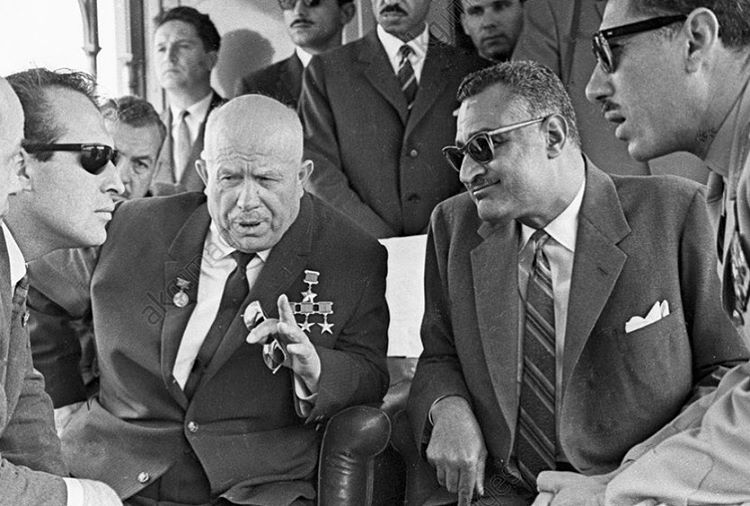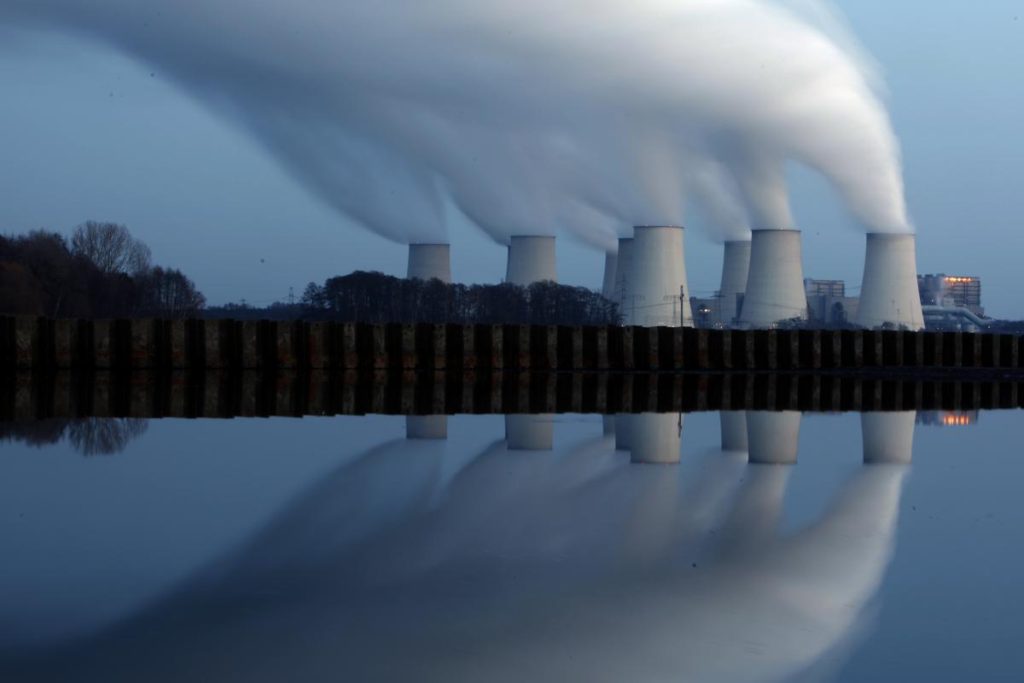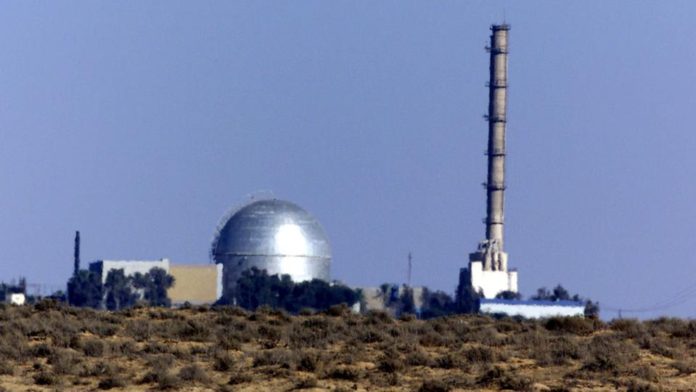The strategic landscape of the Middle East is a difficult puzzle of covert alliances, clandestine nuclear activities, incompatible political behaviours and contesting territorial claims of regional states. A complex network of intelligence communities actively working in a troublesome environment is an additional factor dominating the ongoing wave of crisis which is fundamentally inherited in unsettled Arab-Israel relations. The most significant and importantly unspoken element of Middle Eastern security environment is the nuclear ambition of Israel and its historical attachment to the Negev Desert. The sands of the Negev desert made the nuclear dream of Jewish leaders a successful reality when the first prime minister of Israel, David Ben Gurion, decided to build a nuclear research centre, officially known Negev Nuclear Research Center (NNRC). This research laboratory was completed nearly a decade after the creation of Israel and became the first nuclear facility of the Jewish nation. The initial purpose of NNRC apparently was to enrich the nuclear knowledge of the newly born Jewish state which could be invested in the peaceful directions in future. The NNRC later became the Dimona nuclear facility due to its geographical location. The first plan to start this nuclear project began with a geological survey by a team of researchers in the Negev desert hopping to discover uranium deposits. The geologists’ investigations identified around twenty uranium reserves and later mined the land from northern area of desert to the southern. The area of Negev east of the town Beersheba and close to the Jordanian border was, in this way, selected for the construction of the first nuclear plant of Israel.
Dimona, a small city of the Negev desert commonly known as mini-India due to its majority Indian Jewish population is one of the six important districts of the southern part of Israel. The Dimona nuclear research center is considered to be the pioneer effort of initial Israeli leadership which engaged friendly foreign powers in upholding the strategic aspirations of Jewish community formally located in Middle East. The uninterrupted supplies by the great powers helped the Ben Gurion government in establishing the nuclear complex at Dimona. Initially, the decision to engage the nuclear scientists in the deserted land near the administrative capital of Beersheba remained one of the top national secrets and was confidential to few close aides of Ben Gurion. Majority of Knesset members were unaware of the actual functions of the first nuclear research lab at Negev. Gradually, the strategic developments of the Israel Defence Forces (IDF) equipped with nuclear ambitions of the leaders gained significant support in the Knesset.
Apparently devoted to peaceful purposes, the activities of nuclear scientists working at Dimona nuclear reactor became suspicious when the Knesset started looking for foreign support for enhancing its nuclear research program. American help was considered to be a momentous contribution in the development of Negev nuclear facility, but the Eisenhower administration denied the Israeli request for providing strategic aid. While having sufficient knowledge about Israel-French strategic nexus, Washington viewed the constantly growing nuclear program of Israel is a negative light. It was widely believed that the Dimona could enable the Jewish nation to acquire nuclear weapons in near future. Lack of credible information about secret engagement of nuclear physicists and the construction of nuclear research center at Negev desert raised serious American questions with the passage of time. The first episode of deception started with intense speculations of United States over Dimona, and the Israeli response to the critical American questions proclaimed NNRC initially as a textile facility. As the American Ambassador to Israel during a helicopter flight in 1960 inquired from the members of the Knesset about the construction of a big building in the desert in the southern part of country, the Jewish state authorities said the Dimona was a research lab for serving the peaceful objectives of the nation.

It was the undeclared foundations of Israel-US strategic foundation which was the part of larger Cold War politics. Soviet interests in the Middle East forced the communist leaders from Moscow to focus the Arab states against the widening influence of United States. In 1955, Egypt signed an arms deal with Soviet Union thereby communicating Cairo’s potential to the neighbouring Jewish leader. In reaction, Ben Gurion contacted Eisenhower and conveyed the security concerns of his country against the Gamal Abdul Nasser’s intentions of shaking hands with Khrushchev. American Cold War priorities resulted in Washington’s reluctance for militarily supporting Israel and the request of Jewish authorities was turned down implicitly by 34th US President. The American denial of providing strategic assistance to its unspoken ally in the Middle East diverted the state of Israel toward France. One of the founding fathers of Israel and first Prime Minister, David Ben Gurion, in this way, became a successful leader in acquiring foreign weapon supplies from France. French General, Charles de Gaulle agreed to help Israel economically and strategically. The French supplies were not limited to conventional weapons, Paris was willing to support the nuclear power plant at Negev desert. France decided to uphold Israel’s position in the enduring Arab-Israel rivalry and assertively use its military force against Nasser during the Suez Canal crisis.
In addition to France, Unites States under the Kennedy administration activated its supplies to Operation Plumbat (coded name of covert nuclear efforts of Israel). The aftermaths of third Arab-Israel war, commonly known as June War of Six-Day War in 1967, hampered the strategic ambition of Israel. France stopped its supply of uranium fuel and de Gaulle decided to close the chapter of Israel-French strategic connections. The decade (1957-1967) long Paris funding came to end when French authorities unequivocally put an embargo on Israel. Meanwhile, the Jewish authorities from Knesset were busy in cultivating American support. President Kennedy was interested in changing the traditional domains of American foreign policy towards the Middle East and South Asia. No doubt, Sino-India clash from South Asia, Bay of Pig invasion from Caribbean region along with historical meetings with Ayub Khan and Nikita Khrushchev were unforgettable landmarks in American foreign relations, but the maintenance of pleasant ties with Ben Gurion remained one of the major priorities of President Kennedy. Central Intelligence Agency (CIA) was directed by President Kennedy to be actively engaged in Cuba, Tibet, East Pakistan, and Israel. The foreign intelligence services of US under Allen Dulles, the Director of CIA and younger brother of John Foster Dulles, planned the Lockheed U-2 operations across the globe and spread the American spy planes over the Soviet Union, China, Cuba, and Vietnam. For Israel, President Kennedy revolutionized the American policy and terminated the estranged era of diplomatic interaction between two states.
The Traditional behaviour of Washington towards the Jewish nation designed by previous administrations of Truman and Eisenhower was dramatically changed. Initially, an era of informal security agreements for the protection of Israel against its neighbouring states under the notion of special relationship was inaugurated in a meeting of representatives of the two countries at Manhattan in 1961. Israel, in this way became main recipient of American arms, and received medium-range surface-to-air missile (MIM-23 Hawk). Knesset leaders persuaded America in supporting their state against the territorially adjoining Arab countries. The fundamental interests of President Kennedy’s administration or one of the long-run foreign policy objectives of the US was to prevent the spread of nuclear weapons. While working on the non-proliferation agenda of Washington, President Kennedy emphasized the covert nuclear efforts of South Asia and Middle East. That’s why the state officials from Washington focused on India, Pakistan and Israel, and tried to place the three nuclear aspirants under American alliance while converting them potential anti-Soviet states.
In order to secure America’s sympathetic connections cemented in strategic provisions, Ben Gurion communicated during the first meeting with President Kennedy and Secretary of State, Philips Talbot, the peacefully economic nature of Dimona nuclear plant which could not be divorced from military potential. In this way, the consistent efforts of Israeli Jewish leaders officially declared the Dimona a peaceful nuclear site, and attempted to cover the nascent weapon capacity of the nuclear plant. The claims of Israel about the peaceful nuclear activities of Dimona project raised serious American concerns, and the leading CIA officials planned an inspection of the nuclear facility at Negev desert. The investigations of the Central Intelligence Agency found active involvement of Dostrovsky who was the prominent Israeli visiting researcher at in New York based Brookhaven National Laboratory (BNL) in supervising the nuclear matters of his country. Dostrovsky, after completing his four years research in BNL was brought back to Israel by deputy minister of defence, Zvi Dinstein. This nuclear scientist further became the fifth president of Weizmann Institute of Science due to his distinguished specialization in isotope research. The American trained Dostrovsky and his involvement in the embryonic nuclear program of Israel further complicated the nuclear status of the Jewish state.

Kennedy was famous as the American President favouring non-proliferation, before assuming his Presidential duties he arranged a meeting with Ogden R. Reid, the American ambassador to Israel. Ogden was a close acquaintance of the foreign minister of Israel Golda Meir (or famously known as Iron Lady), and considered to be appropriate person to brief the US President about clandestine nuclear activities of Israel. Dimona was placed on top priorities of Kennedy by Secretary of State Dean Rusk after he raised alarms at the White House about the suspicious status of NNRC in his brief two pages report. No doubt, the Ben Gurion administration had rightly conveyed the peaceful intentions of his country in nuclear domain, but still the suspicious inherited in minor unanswered questions could not be merely ignored, according to Rusk’s report. A close watch on activities of nuclear technicians engaged at Negev desert required a continuing investigation of US State Department, as suggested by Rusk. The mutual consultations of departing ambassador from Israel, Ogden, and Kennedy concluded the formulation of an inspection team. Eventually, Washington proposed a visit of American scientists to Israel and placed it as a firm US demand on the eve of strategic interaction of both states.
Initially hiding behind the domestic crisis caused by Lavon affair, the efforts of Knesset for postponing the visit of US inspectors ultimately came to end and a tour of United States Atomic Energy Commission (USAEC) was scheduled. Two officers of USAEC Ulysses Staebler and Jesse Croach after interacting with two Israeli officers during their visit, Ephraim Katzir-Katachalsky and Manes Pratt, sent a final report containing uncertain findings to McGeorge Bundy, National Security Advisor to President Kennedy. The tentative results of another two paged analysis equivocally marked Dimona complex as a centre of peaceful nuclear activities. The final report based on tentative conclusions of AEC visit at Dimona pushed the state authorities from Washington to plan the first meeting of President Kennedy with Ben Gurion. Instead of receiving the prior briefings on suspicious activities of Dimona complex, the American authorities preferred to avoid tough questions concerning the nuclear reactor. The leaders of both nations laid the foundations of friendly relations and decided to support each other in the regional and global matters.
The critical walls of international community around Dimona became high during the Golda Meir administration. The nuclear facility devoted for peaceful operations troubled the Jewish authorities when Golda Meir became the fourth Prime Minster of Israel in 1969 and was called the best Jewish leader of the nation in Israel by Ben Gurion. The former prime minster considered Meir’s strong will of keeping the Jewish dream of Greater Israel high during her tenure when she experienced the Yom Kippur War in 1973 and wished to use the nuclear weapons against Arab states. In order to avert the threats of defeat in the war, Meir communicated the nuclear weapon capability of her state and revealed the actual functions of Dimona nuclear reactor. Hence, the nuclear tale of the Israel bomb buried in the deserts of Negev became an unquestionable truth, and the untold story of Dimona became one of the gravitational points of global strategic affairs.

Furthermore, various reports of foreign intelligence services on the concealed activities of nuclear scientists coupled with the contradicting positions of Knesset members over the nuclear status of Israel placed Dimona before international strategic community. Now, one of the world’s oldest nuclear reactors has become an unquestionable reality and an undeniable fact for the international community. The nuclear facility which began its functions mainly with the help of France after fifteen years of the illegitimate occupation in Middle East later became the primary source of Israeli nuclear capability. Moreover, the clandestine position of nuclear facilities helped Israeli strategists maintain the ambiguous status of their nuclear weapons by establishing a policy of deliberate ambiguity. The nuclear opacity of Israel started from Dimona complex made Israel the first nuclear weapon state in the Middle East and sixth in the international nuclear arms race. The accurate assessment of Dimona’s actual capacity for producing weapons grade material has become a difficult task due to its secret status. This unclear nature of nuclear reactor has further made it impossible to estimate the actual number of nuclear weapons the Jewish state has produced. All efforts to acquire substantial knowledge of nuclear technicians working in the desert area has also become difficult. Various plans of international intelligence communities coupled with several meetings of Israeli officials with foreign authorities proved to be inadequate in assessing the implicit status of Dimona nuclear reactor.
The conception of implicit nuclear weapons capability parallel to obscurely communicating the existence of nuclear weapon has become a major challenge to the proponents of global non-proliferation campaign. The efforts to pull Israel out from its self-proclaimed mysterious nuclear weapon status can easily be revealed by concentrating on the Dimona facility instead of turning back from Middle Eastern nuclear race or merely focusing an Israel-less nuclear developments of the Arab world. A less-attentive response of global non-proliferation campaign to Israeli nuclear opacity has already helped the Jewish leaders to monopolise the nuclear status of their country. Furthermore, a comprehensive study of Dimona nuclear reactor can reveal various covert connections which helped Israel to acquire and mature the nuclear weapon capability, and committedly sponsored the Jewish authorities in completion of Negev desert project. Initially, lack of necessary infrastructure and inadequate foreign support in addition to various financial and technical hurdles surprisingly overcame by several undercover efforts of Jewish diaspora. In reaction to Israel’s nuclear thrust, the commercial and strategic interests of the international community pushed several states towards Israel.
The determination of leading state officials of Israel decided to adopt a ‘bomb in the basement’ policy for their nuclear weapon program and remained committed in keeping the nuclear program deliberately ambiguous. No doubt, the combination of denial and deception remained the preferred policy options for Israeli authorities, but a brief examination of Dimona can eliminate the mysterious cover of clandestine nuclear activities. In this way, the nuclear armed status of Israel fundamentally rooted in the sands of Negev desert has become a well-established reality and an irreversible fact of contemporary world politics. An extensive record of empirical evidences has now weakened the Israel’s historical behaviour of neither denying nor confirming possession of nuclear weapons and made the nuclear Israel an open secret. Therefore, the efforts of the international community can force Jewish leaders to disclose the unsafeguarded and unannounced nuclear activities of Israel which has disturbed the regional security environment of Middle East.




